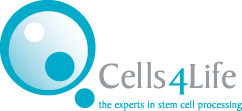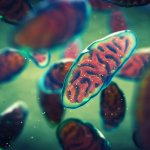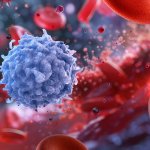Is This The Beginning of the End…for Cancer?
Well, it could be. A positive story for our times. Read all about how specialist immunotherapy treatment saved a little girl’s life. And how 10 years on, she’s still cancer-free and looking forward to a great future.
Everyone loves a story with a happy ending. Here at Cells4Life, we’re no exception. Especially when it concerns such positive, close parallels to our family cord blood banking service.
It goes without saying that with any life-threatening condition – cancer being one of the deadliest – there’s always going to be a note of caution. A caveat, perhaps. None of us can predict the future, after all. With this in mind, we’re delighted to bring you this wonderful, true story. And to rejoice in the near-miracle medical breakthrough that has offered someone another chance when everything seemed lost.
In addition, we’ll explore how, were you to save your baby’s stem cells immediately after birth, he or she could also benefit from the powerful therapies offered by stem cell technology.
Meet Emily
Emily Whitehead is now 17, a young woman in America with many exciting years in front of her. On the brink of adulthood, she has a bright future. CAR T-cell therapy saved her life. But, for a while, her prognosis was dark.
When she was just five years old, she was diagnosed with acute lymphoblastic leukaemia.This is a type of cancer that affects white blood cells and it progressed quickly, and aggressively. Having experienced gruelling chemotherapy, and rapidly declining health, two years later her parents learned that sadly, she was highly unlikely to survive.
(For information, lymphoma differs from leukaemia: the former affects mainly the lymph nodes, while the latter is concerned with blood and bone marrow.)
Lymphoblastic leukaemia is rare; in the UK, for example, only around 790 people are diagnosed with the condition each year, with most cases developing in children, teenagers and young adults.
Emily’s parents’ grit and determination to save their little girl empowered them to consider a new immunotherapy treatment – a clinical trial designed to transform her immune system into its own powerful weapon against cancer. Emily was Patient 1, the first child ever enrolled in this process.
Was it guaranteed? No. Would it work? Read on to find out more.
CAR T-Cell Therapy
CAR stands for Chimeric Antigen Receptor.
But first, let us explain what T-cells do.
Imagine T-cells as our knights in shining armour, moving around the body finding and destroying harmful or defective cells. Were we to come into contact with a new disease or infection, our T cells step up to fight them. And they’re excellent defenders.
Except when it comes to cancer cells, which can easily be missed because the T cells can’t always tell the difference between these, and a normal cell. So, this situation needs to be remedied, which is where CAR T-Cell Therapy comes into play.
CAR T-Cell Therapy takes a sample of T-cells from the blood – this is called apheresis. In the lab, they change the T-cells – in other words, they use a form of genetic engineering. These new cells can then recognise and target a specific protein on the cancer cells.
They multiply in the lab, and then, when there’s enough of them to have an influence, scientists put them back into the bloodstream, enabling the T-cells to fight cancerous cells as effectively as they battle against other conditions and infections.
Back to Emily
And THIS, is what happened with Emily Whitehead. Her parents referred to this process as sending the T-Cells to “bootcamp”, which we think sums everything up perfectly.
After developing a high fever, which was expected, she was put on a ventilator and watched carefully. Emily woke up on her seventh birthday, and eight days later the doctors declared her cancer-free.
She has remained so ever since.
As of August 2021, there are now five US Federal Drug Administration CAR T-Cell Therapies for people with cancer, due in no small part to the bravery of a small girl, and the foresight and courage of her parents.
How Does Stem Cell Storage Work?
Given that medical breakthroughs are happening all the time, it makes sense to harvest and store the stem cells found in your new born baby’s placenta and umbilical cord. Why? Because here, and just at this time there is an ultra-rich supply of these special cells. (They deplete as we grow up.)
The potency of stem cells comes from their ability to become any cell in the human body – nerves, blood, muscles, and so on. Thus, they have properties that scientists can use to treat the root cause of many, many health issues.
Is Stem Cell Banking Worth It?
An unambiguous “yes” from us here at Cells4Life.
Truly, health is wealth. With stem cell technology, wellbeing into his or her middle and old age could offer your child the greatest of legacies.
Whilst the years yet to come are unknown, stem cells are almost certainly the future of medicine. Many exciting new developments are more than possible using these types of cells, not least in their incredible means to repair or replace human cells, tissues or organs, restoring them to a completely normal function.
Including lymphoblastic leukaemia, now hopefully well in Emily’s past.
Why not download a Welcome Pack? It’s full of useful, jargon-free information all about stem cell banking. Just enter your details below.
Request a Welcome Pack
Find out more about cord blood banking by downloading a Welcome Pack now.
If someone you love is affected by cancer or more specifically leukaemia, you’ll want to support them as best you can. If you would like to know more about this disease check out the great work the charity Young Lives vs Cancer are doing here.
There are also plenty of resources to be found on the Cancer Research UK site here where you can learn more and help fund further research into cancer.
None of the information on this website pertains to medical advice. For medical advice and support with your healthcare please speak to your designated Healthcare provider.








